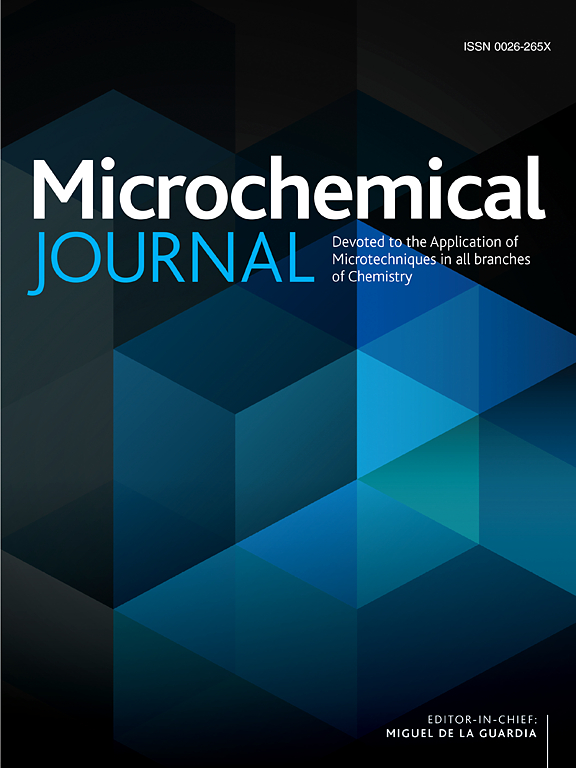Real-time biosensing of pathogenic bacteria with SERS-functionalized nucleic acid sensors: Promising new tools for ultrasensitive and multiplexed analysis
IF 4.9
2区 化学
Q1 CHEMISTRY, ANALYTICAL
引用次数: 0
Abstract
Rapid prevention and control of diseases caused by pathogenic bacteria is one of the current food safety regulatory concerns encountered via different countries and has garnered considerable attention from all sectors of society. The progress of reliable and rapid sensing techniques for pathogenic bacteria remains a hot research area for public health due to the limitations of time-consuming, complex steps, poor selectivity, or low sensitivity of normally used approaches. Owing to its high selectivity, sensitivity, rapid response, and nondestructive capabilities, functional RNA/DNA-based SERS has emerged as a powerful substrate for the detection and differentiation of various pathogenic bacteria. This review aims to explain the operational principles of numerous functional nucleic acids in SERS detection, comprising CRISPR, G-quadruplexes, DNAzymes, aptamers, origami, together with the construction procedures and practical applications of functional RNA/DNA-based SERS sensing. Primarily, a summary is provided that outlines the structural features and SERS detecting mechanisms characteristic to various functional DNA and RNA. Following this, several innovative approaches for fabricating functional nucleic acid-derived SERS sensors are detailed for bacterial detection, with the aim of enhancing current detection capabilities. Ultimately, conclusive remarks are presented, together with a survey of the current challenges and potential avenues for future research in this established field.

利用sers功能化的核酸传感器对致病菌进行实时生物传感:超灵敏和多路分析的新工具
快速预防和控制致病菌引起的疾病是当前各国食品安全监管面临的问题之一,已引起社会各界的高度重视。由于常用的病原菌检测方法耗时长、步骤复杂、选择性差、灵敏度低等缺点,开发可靠、快速的病原菌检测技术一直是公共卫生领域的研究热点。由于其高选择性、灵敏度、快速反应和无损能力,功能性RNA/ dna SERS已成为检测和分化各种致病菌的有力底物。本文综述了多种功能性核酸在SERS检测中的工作原理,包括CRISPR、g -四联体、DNAzymes、适体体、折纸,以及基于功能性RNA/ dna的SERS传感的构建过程和实际应用。首先,概述了各种功能DNA和RNA的结构特征和SERS检测机制。在此之后,详细介绍了几种用于细菌检测的制造功能性核酸衍生SERS传感器的创新方法,旨在提高当前的检测能力。最后,提出了结论性的评论,并对当前的挑战和未来在这一既定领域的潜在研究途径进行了调查。
本文章由计算机程序翻译,如有差异,请以英文原文为准。
求助全文
约1分钟内获得全文
求助全文
来源期刊

Microchemical Journal
化学-分析化学
CiteScore
8.70
自引率
8.30%
发文量
1131
审稿时长
1.9 months
期刊介绍:
The Microchemical Journal is a peer reviewed journal devoted to all aspects and phases of analytical chemistry and chemical analysis. The Microchemical Journal publishes articles which are at the forefront of modern analytical chemistry and cover innovations in the techniques to the finest possible limits. This includes fundamental aspects, instrumentation, new developments, innovative and novel methods and applications including environmental and clinical field.
Traditional classical analytical methods such as spectrophotometry and titrimetry as well as established instrumentation methods such as flame and graphite furnace atomic absorption spectrometry, gas chromatography, and modified glassy or carbon electrode electrochemical methods will be considered, provided they show significant improvements and novelty compared to the established methods.
 求助内容:
求助内容: 应助结果提醒方式:
应助结果提醒方式:


